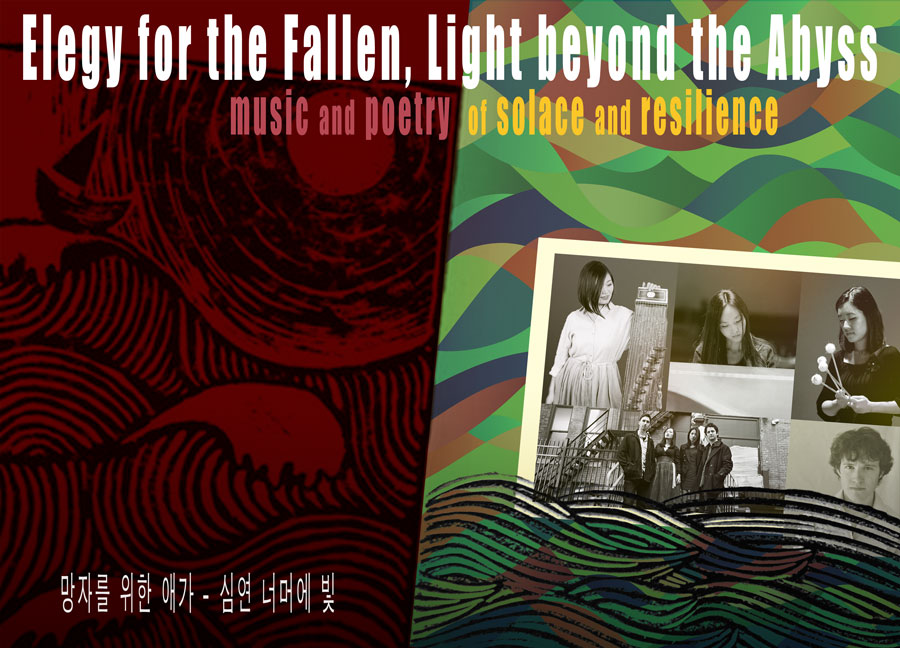An Excerpt from the Concert
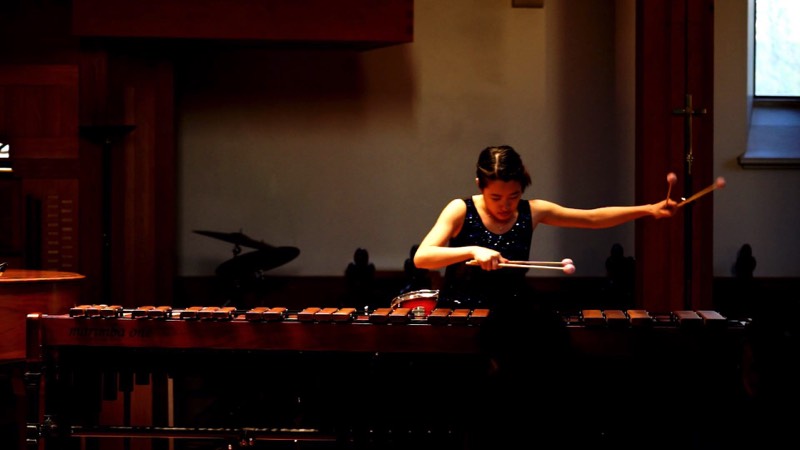
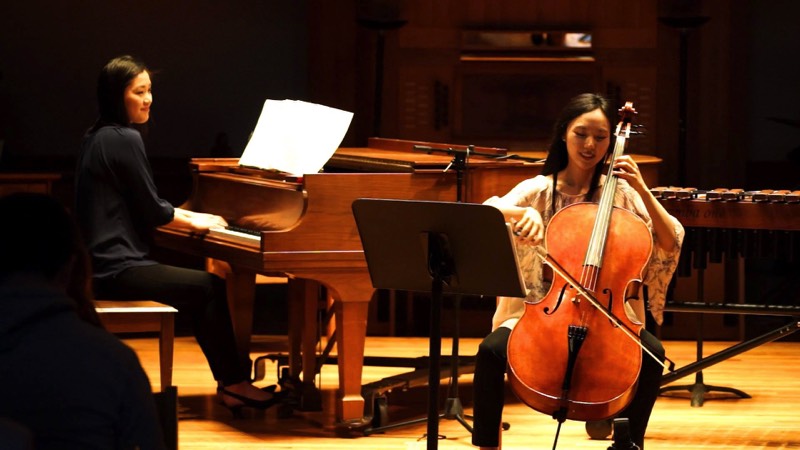
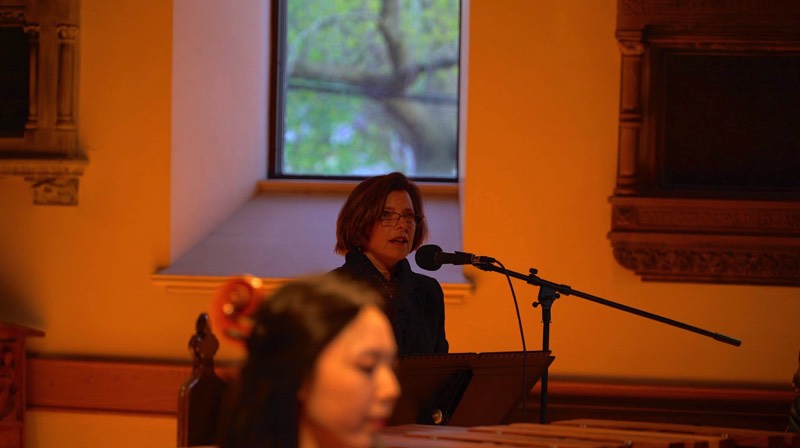
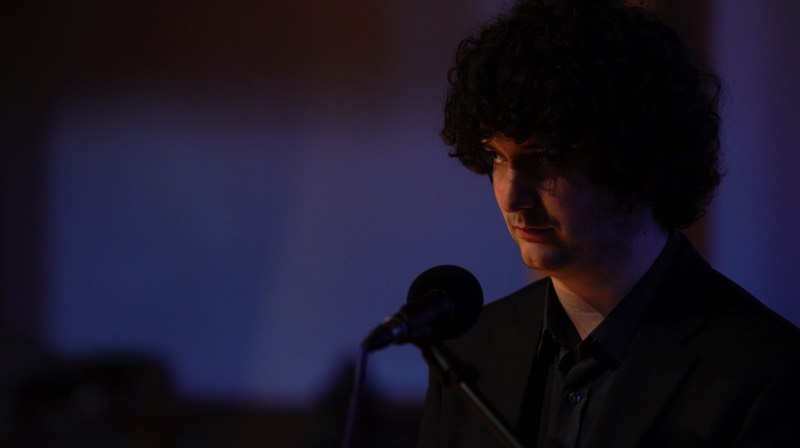
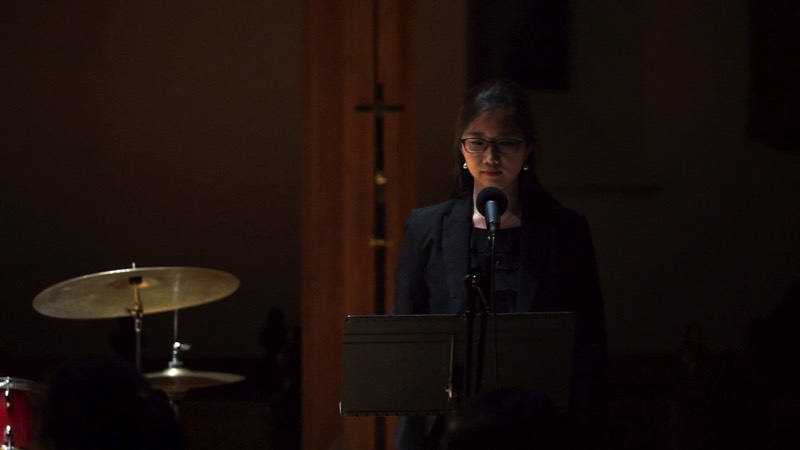
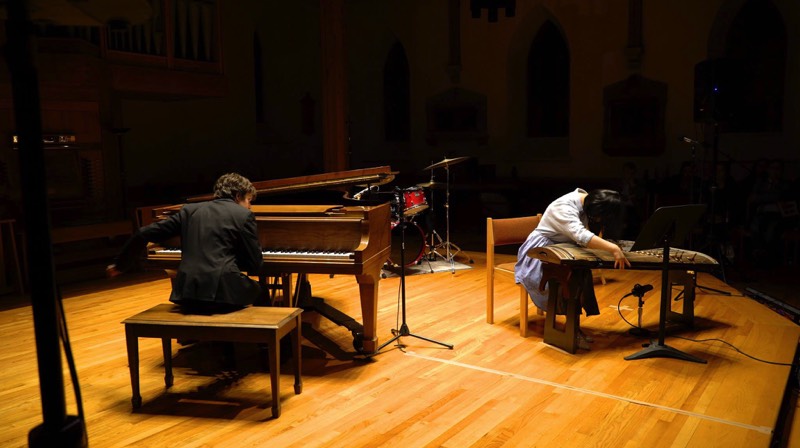
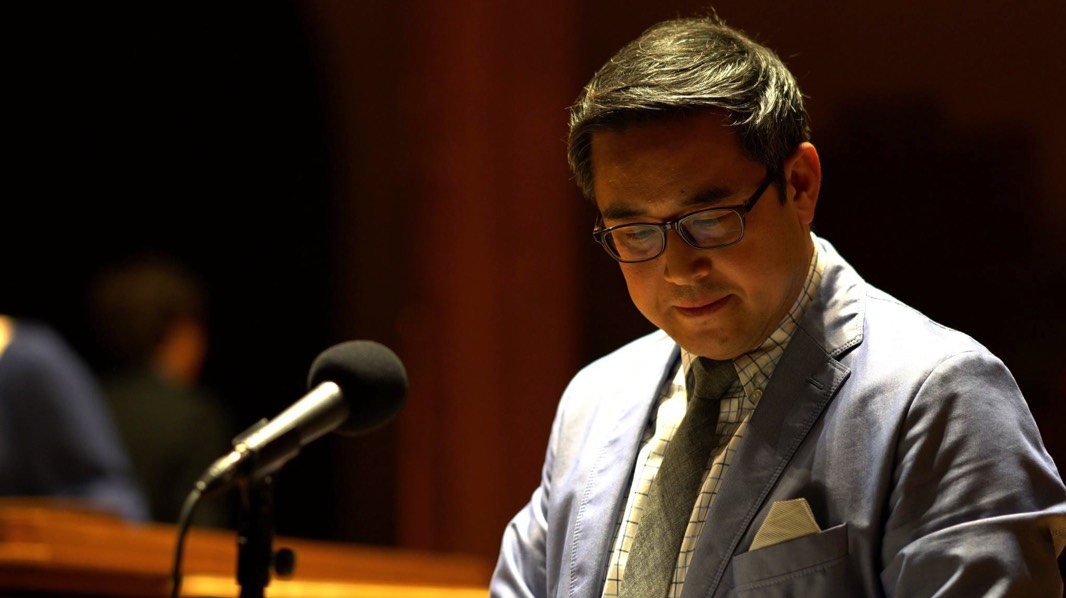
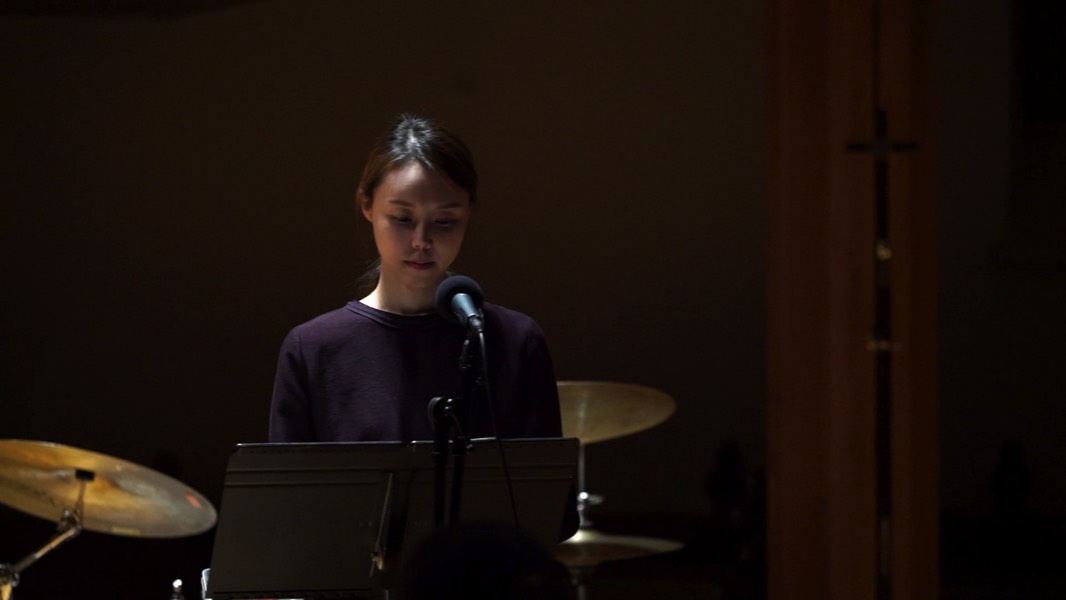
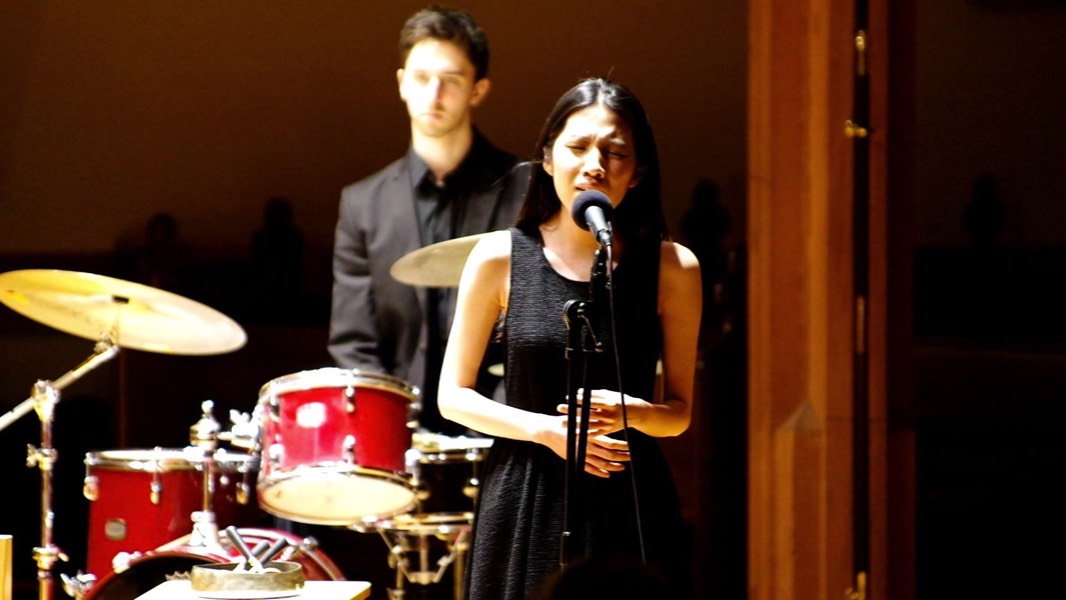
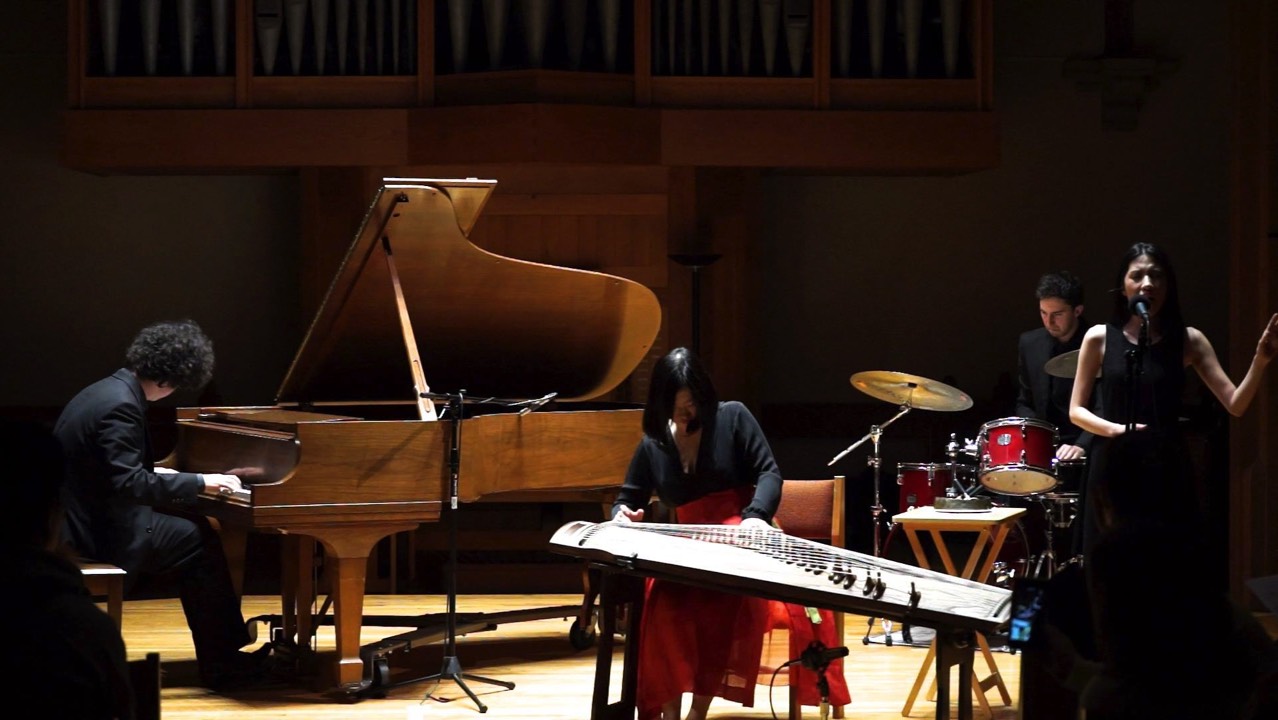
Performers
in order of appearence
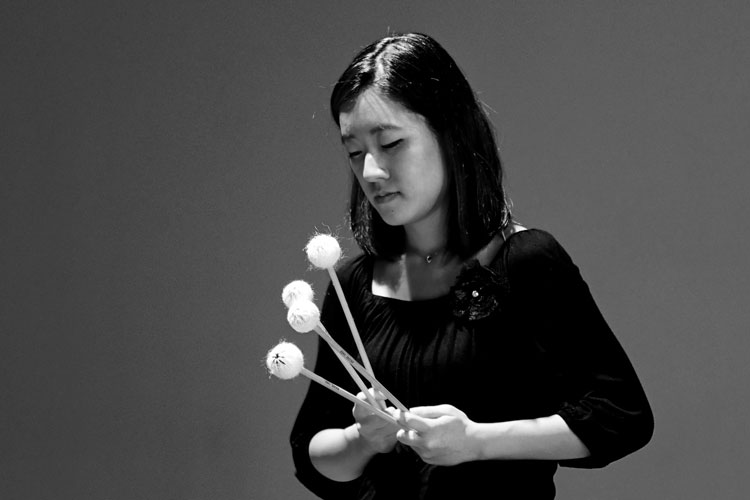
Christina Cheon is a contemporary and classically-trained marimbist. In 2009, she was the scholastic grand prize winner of the Southern California International Marimba Competition, resulting in her artist debut and featured solo performance at Chapman University. Since then, she has performed in numerous concert engagements in the US, including performing as a featured artist in the 2015 Zeltsman Marimba Festival at New Brunswick, NJ. Christina has won several awards such as the First Prize in the 2014 Sigma Alpha Iota Scholarship Competition and the 2013 Dream with Me Foundation Instrumental Scholarship in Pasadena, CA, among others. She is the founder and artistic director of the Southern California Marimba Concert Series, dedicated to providing high-quality concerts twice a year that offer free admission for younger students. Christina is currently studying the marimba with Nancy Zeltsman at the Boston Conservatory and will receive her Master of Music degree this year in May.
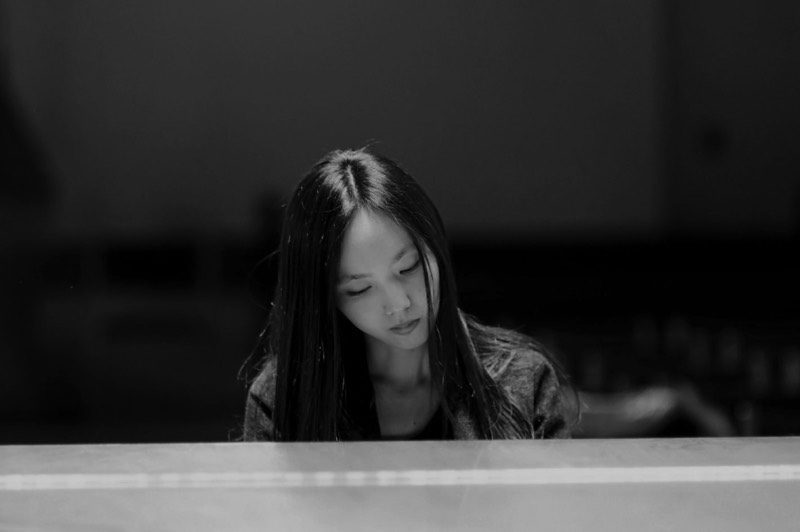
Yumi Bae is a classically trained cellist. She started cello at the age of eight, making her debut as a soloist with the Hyundai Youth orchestra and the Bright Bows Ensemble of Russia at the age of twelve. Besides being a superb soloist with refined sound and techniques, she also participated in chamber ensembles such as Hwaum Boston String Orchestra, Haffner Sinfonietta, Boston Accompanietta and Ensemble Rose. She has been invited to the Busan Music Festival, the workshop with the Royal Academy of Music in London, Eum Yeon Music Festival and Beaux Arts Trio Music Academy, where she performed in the final concert. Recently, she was the featured soloist with the Boston University Symphony Orchestra. Her mentors include Hyejeong Chang, Byeonghun Park, and Huichul Chae at Sookmyung Women’s University where she received Honor’s scholarship during her four years there as an undergraduate. She holds a Masters of Performing Arts from Boston University School of Fine Arts, and is currently a Doctor of Musical Arts candidate under the guidance of Michael Reynolds.
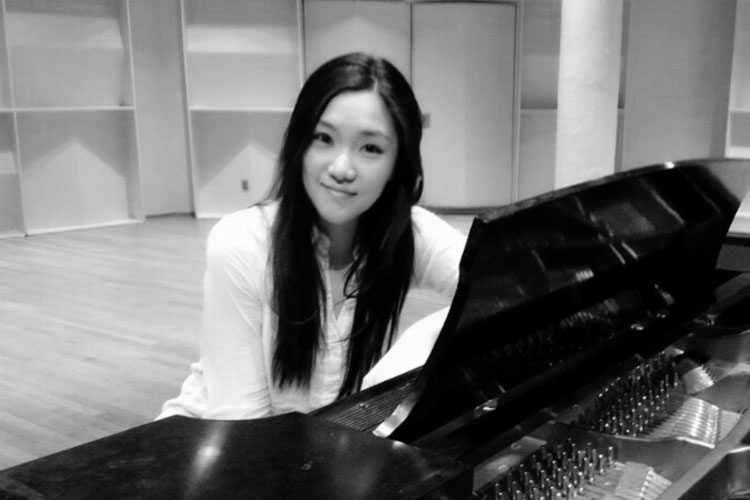
Clera Ryu is currently a third year Doctor of Musical Arts student at Boston University in Collaborative piano. She has worked with professional musicians and actively collaborates in both instrumental and vocal repertoire. Previously, she received Professional Artist Certificate at the North Carolina School of the Arts focusing on chamber music. Clera spent the last summer in France working as a vocal coach and pianist at the Franco American Vocal Academy and this year, she is joining the Boston University Tanglewood Institute as a coach.
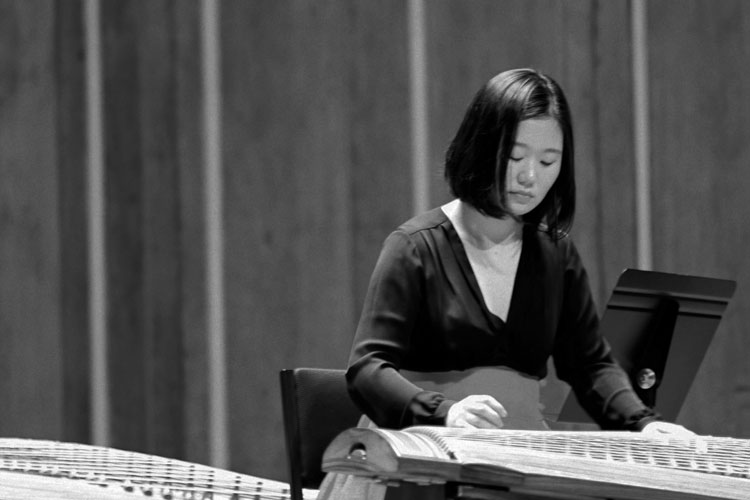
Since the age of 12, Boston-based Gayageum performer Do Yeon Kim has dreamt of introducing Korean traditional music to the international stage. She is the first Gayageum player admitted to the New England Conservatory, where she currently studies Contemporary Improvisation under Hankus Netsky. Her graduate studies at NEC provide the opportunity to increase her understanding of all types of music, and to compose and perform music incorporating Korean folk music and other World Music styles. In both 2009 and 2011, Do Yeon received the Gold Prize in Gayageum sponsored by the National Center for Korean Traditional Performing Arts, one of the most prestigious awards in Korea. In addition to a number of other prizes, she was also awarded the 2009 Gold Prize in the Dong-A Ilbo Traditional Music Competition. Experienced in both traditional Korean music and modern works alike, Do Yeon has played several of her own solo recitals in Korea, and performed alongside composer John Zorn himself in a 2014 concert of Zorn’s music at New York City’s “The Stone”. The Boston Museum of Fine Arts invited her to play in the “Lunar New Year Music Performance” in February, 2015. In 2008, Do Yeon was chosen by the Korean Department of Culture as one of the few Gayageum musicians in the Seoul Youth Delegation tour of Japan. She has worked with many living composers and performed several world premieres, and has also been invited as a guest lecturer on Gayageum and Korean Music at Emmanuel College and Brandeis University. A graduate of the National Traditional Music High School, DoYeon received top honors upon her graduation from Seoul National University’s College of Music in 2014. She is a protégé of living Gayageum master Yi Jiyoung.
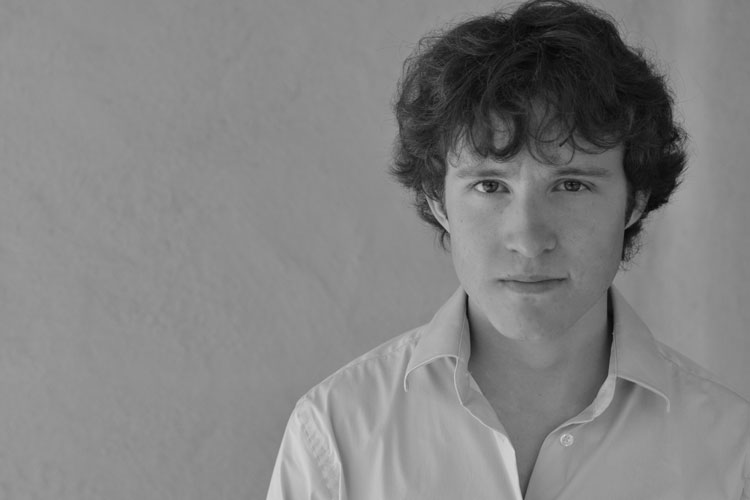
Chase started giving piano lessons as a teenager and formed and directed the Chase Morrin Trio and Latin Connection (quintet). As a double degree program student at Havard, he has a BA in Computer Science and Neurobiology from Harvard, and expects to obtain MM in Jazz Composition from NEC this Spring. Among the awards he received are the Monterey Jazz Festival Gerald Wilson award for composition (2011), Yamaha Young Performing Artists in Jazz (2012), nine DownBeat awards in Jazz (2009-2015), ASCAP Jimmy Van Heusen award (2012), Hugh F. MacColl prize for violin/cello duo composition (2015) and Loius Sudler Prize in the Arts, Havard (2015). This April, he premiered his piano concerto commissioned by Louisville Orchestra, KY. His most recent project, under guidance of Vijay Iyer, is the Corn Knight, an extended piece for piano and marimba. When he is not on piano, he is also a proficient programmer in Python, C, PHP, Java and Ocaml, among others.
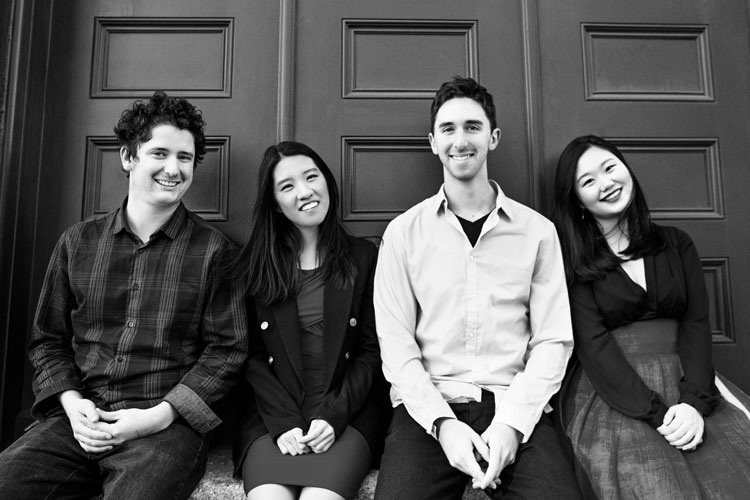
Jaeyu can best be translated into English as “freedom,” and it’s through this lens that the story of the Jaeyu Quartet can best be told. The members formed the quartet out of pre- existing friendships and admiration, with the intention exploring freedom collaboratively and purposefully. What does freedom mean in music? How can we free ourselves from the boundaries of genre so often needlessly imposed? How can we create a space in which every member feels free to express themselves and their respective cultures? How can we use our music and our freedom to bring awareness and action to the myriad “unfreedoms,” as economoist Amartya Sen puts it, that exist in today’s world? These are some questions the quartet is exploring, and they invite you to join them in this exploration.
“Creativity is the key to human liberation.” – activist Grace Lee Boggs
Vocalist Wonmi Jung is a songwriter from South Korea. Her unique interpretation of music is informed by the distinctive style and diverse musical background. As a child, Wonmi’s artistic outlet centered around painting and poetry. At age 15, she won the grand prize for poetry at the Lake Art Youth Festival, a writing contest in South Korea. She went to Seoul Music High School, then Musicians Institute in Los Angeles. There she worked on Pop music, and musical theater. Wonmi is studying at New England Conservatory with mentors Dominique Eade, Frank Carlberg, Ran Blake, Hankus Netsky, Jeannie Lovetri, Kate McGarry.
Chris McCarthy, originally from Seattle, Washington, is an active pianist and composer currently based in the Boston area. McCarthy is currently attending New England Conservatory on a presidential merit scholarship and regularly performs with Jerry Bergonzi, George Garzone, Jason Palmer, and many others. He is a member of the 2015 NEC Jazz Honors Ensemble and the 2016 Wild Card Honors Ensemble.
Eli Cohen hails from a small town in Maine called Farmington. He studies drum set performance and composition in the Contemporary Improvisation program at New England Conservatory and is an active drummer, composer and teacher. Eli is the youngest drummer ever to perform one of contemporary classical composer Stuart Smith’s percussion works; he also performs regularly in folk and trad. music settings, as well as klezmer and contemporary gospel ensembles.
About the Program
Calamity in epic scales, brazen social injustice, cruel consequence of everyday prejudice. These were not invented in the current century, nor in any other recent eras. However, every time we encounter a news item reporting one, we are shocked anew because in the minds of instagram-sharing, youtube-enlightened and facebook-friendly people of the developed nations, such things are not allowed under our Google-smart watchful eyes.
In a book published in the aftermath of 9/11, and Sarajevo not far in the past, Susan Sontag wrote in the context of human cruelty as represented in an art form by way of commenting on Virginia Woolf’s earlier writing on the subject:
“Not to be pained by these pictures, not to recoil from them, not to strive to abolish what causes this havoc, this carnage … would be the reactions of a moral monster… Our failure is one of imagination, of empathy: we have failed to hold this reality in mind.“
In those years, photography has long established itself as the medium that grabs public’s attention and dominates its imagination. One of the points she elaborated on was the quality of viewer’s engagement with their representation that sweeps by like a flood. By then, 24-hour news channels have been around for decades, and just two years down the road, Youtube waiting to explode. But in her view, the ephemeral nature of video streams makes it fall short of acutely affecting our mind as still images do. Anyhow, we are now living in an era in which one may say without blinking his eyes, that any publicity, good or bad, helps one’s cause. Arriving with such a cynical message, photography, video, music and text all often seem to conspire and deprive us of our capability to get deeply outraged. Our engagement level becomes paper-thin, in the form of clicking a like button, or a short glance at the infinitely-looping animated gif.
Recently, I re-read Anne Frank’s diary, hopefully with a mind more mature than for the first encounter with the book as a mandatory grade-school reading. This time, I was struck by the depth of pain induced by a passage that just details her mundane daily chores and anecdotes. Many other readers probably share the same startling experience. For those of us who do not dedicate our lives to an organized resistance to the forces that want to divide, corrupt and destroy, any precious occasion to pause and reflect on the pain of others more personally elevates our mind above the chitchat of daily concerns. An elevated vista, one hopes, will bring clarity, our daily choices more consequential.
Throughout ages, the arts, whether it be a powerful painting such as a Picasso or a Goya, or a piece of music by Bach or Piazzolla, helped people liberate themselves, empathize with others, and overcome personal pains. At the same time, no great artist forgot to create works that inspire and educate in exulting over the joy of life. Many pieces performed this evening embody the breadth of the trajectories that one may encounter during the time of grief, guiding toward the recovery of resilient spirits for righting the wrong, empathy and ultimately celebration of the living.
Classical pieces in the program are as true to this spirit as they can be: Bach and Piazzolla wrote them in reaction to their personal loss; one of the contemporary pieces in the program was written by Jung through her deeply felt feeling for the innocent victims of the recent Sewol Ferry accident in Korea that still pains its people to this day. In other part of the program, I personally feel someone struggling to negotiate emotional turmoil, trying to regain the inner peace. In others, a conversation to console, lighten up, and share the irrepressible joy of life.
Gathering of the diverse range of music and poetry that make up this program was possible thanks to the ethnic and cultural backgrounds of the performers, whose rigorous training spans across genres and styles of music from the classical, both in the Western canon and Korean tradition, and beyond. It is fitting that the later part of the program features superb practitioners of contemporary improvisation since one might say we all have nothing but to improvise when faced with an unexpected crisis in life.
We believe that even timeless masterworks lose their power if faced with a passive and attention-deficient audience who have their index fingers hovering over the mouse button for the next click. We very much appreciate that each of you in the audience paid for the ticket, and showed up. We wish that while you are here, you will commune with the performers with their heart-felt performance and allow yourself a parcel of reverential space/time in which we collectively remember the victims and share the pain of the bereaved at a level deeper than our mass media of choice allow. Where to go from here? It would be up to the decision each individual makes.
보스니아 내전의 기억이 아직 선명하고 9/11이 일어난 후에 미국의 저명한 저술가인 수잔 손택 (Susan Sontag) 은 '타인의 고통’ (Regarding the pain of others) 이란 책에서 인류가 겪는 잔인함을 예술작품으로 담으려는 노력에 대해 다음과 같이 화두를 잡습니다:
“이런 사진을 보고 고통을 모르고, 움찔하지 않고, 이런 처참한 일을 일으키는 원인을 없애보려고 발버둥치지 않는다면 이는 도덕이라곤 전혀 모르는 괴물이라할 것이다…. 우리의 잘못은 상상력의 결여, 공감의 능력을 상실함에 있고 이는 우리가 이러한 현실을 마음속에 담지 못했기 때문이다.”
이 책이 나온 때는 사진을 통해 전달되는 생생한 장면들로 대중의 관심과 상상력이 지배받기 이미 오래된 시점이고, CNN과 같은 24시간 뉴스 생방이 일상화되고 곧 이어 2년 후면 유튜브가 폭발적으로 쓰임새를 얻게되는 시점이기도 합니다. 손택은 다음과 같이 지적합니다: 아무리 쓰라린 내용이라 하더라도 그 서술이 홍수처럼 쏟아져 내려오는 상황에서, 대중이 이에 할여하는 관심의 질이 얼마나 되겠는가? 순식간에 스쳐지나가는 비디오 서사보다는 오히려 한 장의 사진이 더 깊은 각인을 남기지 않나하고 이어 생각합니다. 어찌되었든, 십수년이 흐른 지금 우리는 미디어의 홍수속에 살게 되었고, 사람들은 냉소적으로 좋든 나쁘든 미디어에 뜨기만 하면 뭐든 도움이 된다라고 서슴없이 말하며 사는 시대 입니다. 그러다 보니, 항상 마우스 버튼에 손가락을 올려 놓고 여차하면 다른 링크로 옮겨갈 준비가 되어있는 우리가 사회악이나 부조리등에 느끼는 분노, 그리고 피해자들의 고통에 같이하는 공감은 얄팍한 정도에 그치고, 이는 사진, 영상, 음악, 문학, 블로그 기사 등이 모두 힘을 합하여 유인해가는 탓도 있음직 합니다.
초등학교때 학교 선생님이 강요(?)해서 지루하게 읽고 말았던 안네 프랑크의 일기를 얼마전 다시 읽어 보았습니다. 그 때보단 세상 일을 조금은 잘 알게되었다 할 안목으로 말입니다. 이번에는 의외로 그 어린 소녀가 시시콜콜 자기 일상 생활의 일과 엄마, 친구들에 대한 불만등을 늘어놓은 부분에 마음이 쪼개지는 듯한 아픔이 느껴졌습니다. 이 책을 어른이 되어 읽은 많은 이들도 비슷한 경험을 해 보았으리라 생각됩니다. 그리고 한국 분들이라면 얼마전 세월호에서 희생된 학생들이 몇분 후 다가올 비극을 아직 파악 못한 상태에서 가족, 친구들과 나눈 문자 메세지들을 보며 울음을 참지 못한 분들도 많이 있을 것입니다. 역지사지라고 하지요. 세상을 바로잡는 일에 전력투구를 하지 않고 살아가는 보통 사람인 저희들은 하루 하루의 많은 시간이 티격태격 일상적인 관심사들을 소화해내느라 급급하게 흘러갑니다. 잠시 시간을 내서 마음을 정돈하고 남의 고통을 내 사랑하는 이들의 것처럼 느껴본다면 많은 다툼의 순서가 명확해지고 우리가 내리는 많은 결정들이 더 많이 좋은 결과를 가지게 될터인데…
손택같은 이들이 그 진정성에 대해 고민을 많이 하기도 하지만, 오랜 세월 동안, 피카소나 고야의 그림이든, 바흐나 피아졸라의 음악이든 많은 사람들이 그 예술가들의 절규하고 슬퍼하고 어루만져주는 듯한 작품을 통해 자신의 고통을 극복하고, 남의 어려움을 나누어 버텨주고, 스스로를 해방시키는 경험을 해왔습니다. 이와 동시에 우리가 아는 모든 거장들은 또한 생명의 환희를 일깨우는 작품들도 같이 남겼습니다. 이번 음악회의 프로그램은 우리가 큰 슬픔에 처했을때 이를 겪어가는 과정의 다양한 모습을 담고자 합니다. 아무리 슬픔의 깊이가 커도, 그 무게가 사람을 철저히 부수어서, 잘못을 바로잡아 고치려는 의지, 공통체적인 치유의 나눔, 그리고 궁극적으로 남은 이들의 생명을 축원하는 일, 이들을 잃게 해서는 안 될것입니다.
이번 프로그램의 곡들은 이러한 맥락에서 선정했습니다. 바흐의 무반주 첼로조곡 2번은 아내를 갑작히 떠나 보낸 직후에 작곡된 곡입니다. 특히 첫번째, 프렐루드는 한없는 슬픔과 깊은 위안의 힘을 같이 가지고 있는 곡이라고 생각됩니다. 피아졸라는 젊고 힘든 시절, 아버지가 세상을 떠났다는 소식을 듣고 신이 들린것처럼 Adios Nonino를 썼다고 합니다. 그가 쓴 많은 Nuevo Tango 곡들은 눈물샘을 자극하기로 유명하지만 특히 이 곡은 애절하고 회상적인 분위기의 멜로디와 함께 박력있는 전개가 점철되는 특별한 곡입니다. 또 프로그램의 피날레인 “Lost”는 NEC의 젊은 vocalist인 정원미씨가 세월호의 희생자를 기리면서 만든 곡입니다. 물론 이 모든 곡들은 특정 사건이나 생각의 틀에 얽매여 있지 않습니다. 그러나 개인적으로 저는 마림바 솔로 연주곡들에서는 마음속의 동요와 고통을 가다듬으려고 노력하는 모습을, 또 다른 앙상블 곡들에서는 서로를 위안하는 대화, 즐겁게 다독거림, 억제할 수 없는 삶의 즐거움을 되찾으려는 노력등을 느끼게 됩니다.
이번 프로그램에 다양한 형태의 음악과 시를 모을 수 있던 것은 연주자들의 다양한 국적, 문화적 배경과 함께 통시대적인, 즉 서양음악과 국악의 전통 그리고 현대 즉흥음악을 꿰뚫는 그들의 고된 훈련과 창의력이 지금 이곳 보스톤에 결집되어 있던 덕분입니다. 인생의 가도에서 예상치 못한 중대한 위기를 마주칠 때 종종 즉흥적으로 대처하는 외에 달리 방법이 없는 점을 감안하면 특히 후반부 즉흥 연주자들의 참여는 의미가 깊다고 생각합니다.
시대를 초월하는 걸작들도 무관심하고 게으른 관객은 당해내기 힘듭니다. 오늘 참여하신 여러분들은 표를 돈을 주고 구입하셨고, 또 바쁜 걸음을 하셔서 무대 앞에 앉아 계십니다. 감사합니다. 연주가 진행되는 동안 혼신을 다하는 연주자들과의 교감을 마음껏 누리시고, 우리 모두 망자를 기억하고 남아있는 자들의 슬픔과 그 극복을 같이나눌 수있는 경건한 장소를 귀하의 마음 어느 곳엔가 만들어 가지고 가시길 바랍니다. 그 다음 어떤 일들이 전개가 되는 지는 우리 각자의 결정에 달려 있겠지요.
